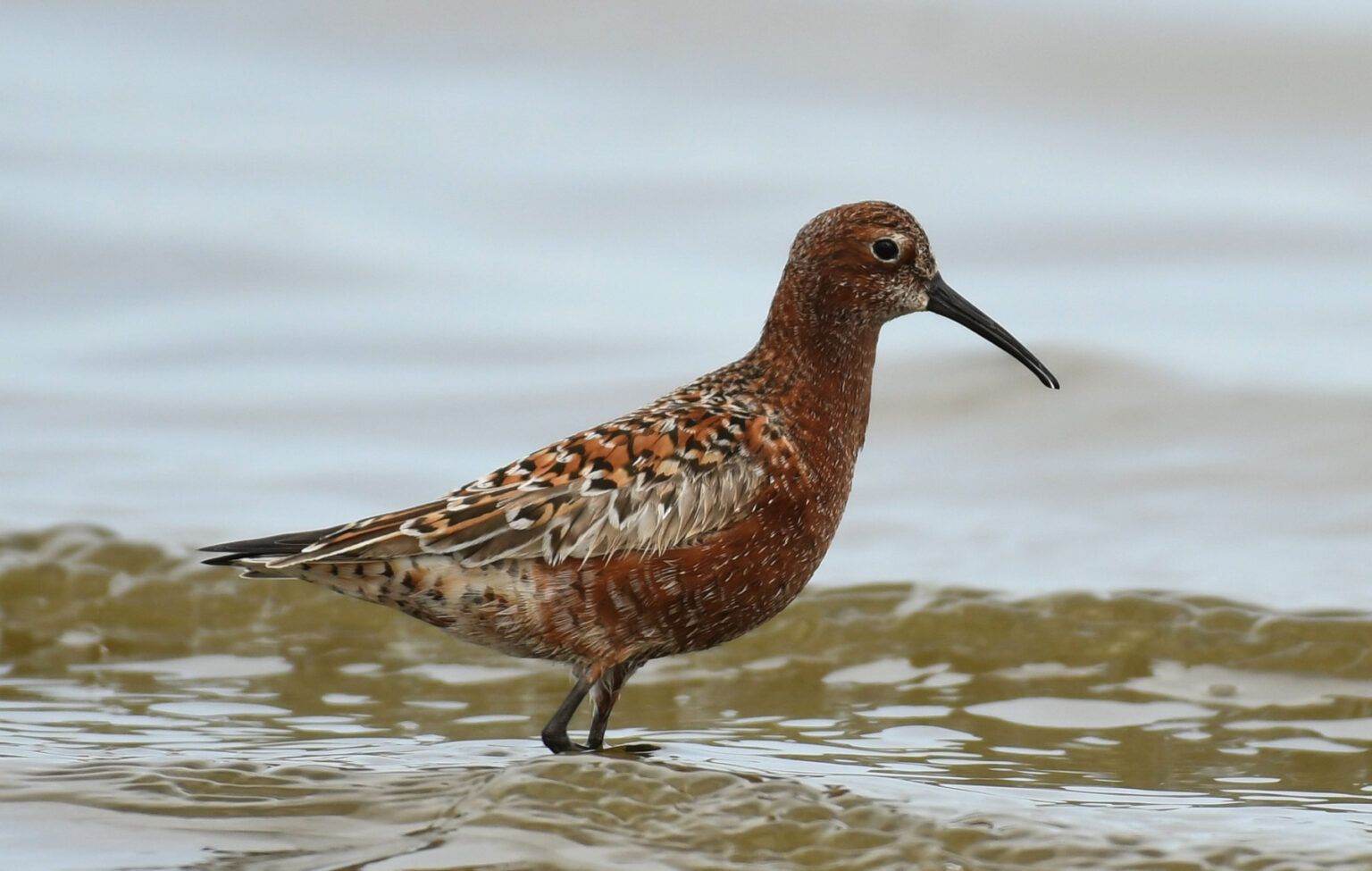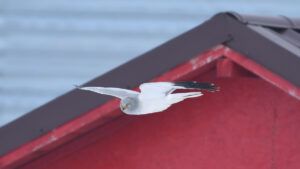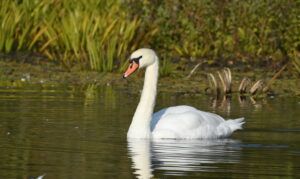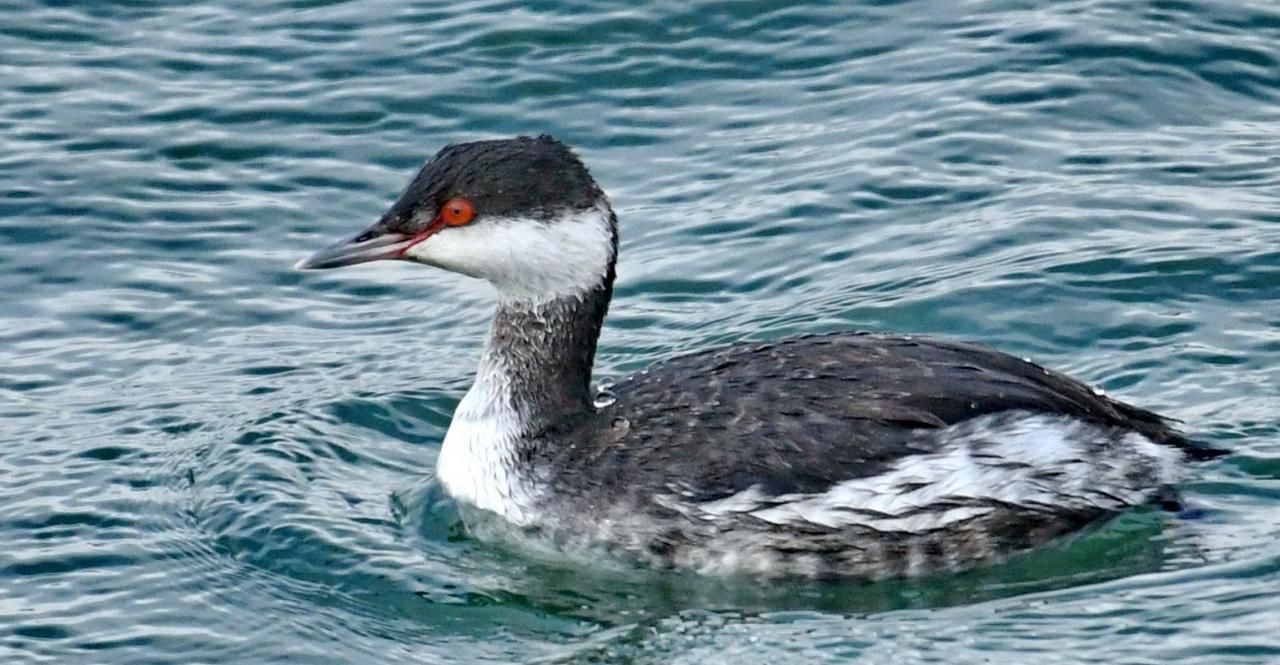The Curlew Sandpiper (Calidris ferruginea) is a small wader that breeds on the tundra of Arctic Siberia. It is strongly migratory, wintering mainly in Africa, but also in south and southeast Asia and in Australasia. It is a vagrant to North America.
These birds are small waders, only slightly larger than Dunlin at 19.5–21 cm in length, but differ from Dunlin in having a longer down-curved bill, longer neck and legs and a white rump. The breeding adult has patterned dark grey upperparts and brick-red underparts. In winter, this bird is pale grey above and white below, and shows an obvious white supercilium. Juveniles have a grey and brown back, a white belly and a peach-coloured breast.
Behaviour
The male Curlew Sandpiper performs an aerial display during courtship. The clutch of 3–4 eggs are laid in ground scrape in the tundra and taiga, mostly in Siberia.
It is extremely difficult to measure breeding success or population trends in their breeding grounds because nests are scattered over a vast region and their positions influenced by localised weather.
Of all shorebird species, the curlew sandpiper has the smallest breeding range in relation to its non-breeding range. After breeding these birds migrate south to Africa, Australasia or India. South Africa is at the southern limit of the migration path from Siberia, 15 000 km or 130 degrees of latitude away.
This wader is highly gregarious, and will form flocks with other calidrid waders, particularly Dunlin. Despite its easterly breeding range, this species is regular on passage in western Europe, presumably because of the southwesterly migration route.
It forages in soft mud on marshes and the coast, mainly picking up food by sight. It mostly eats insects and other small invertebrates.
The numbers of this species (and of Little Stint) depend on the population of lemmings. In poor lemming years, predatory species such as skuas and Snowy Owls will take Arctic-breeding waders instead.
Counts of the birds in South Africa, specifically at Langebaan Lagoon where they are most numerous, indicate a 40 percent decline in numbers between 1975 and 2009. A similar trend has been noted in Australia and may be linked to effects of global warming at the breeding grounds.
This species occasionally hybridizes with the Sharp-tailed Sandpiper and the Pectoral Sandpiper, producing the presumed “species” called “Cooper’s Sandpiper” (“Calidris” × cooperi) and “Cox’s Sandpiper” (“Calidris” × paramelanotos), respectively.
Taxonomy
This is a fairly unusual species, and has been proposed as type species of the genus Erolia but the DNA sequence data is currently insufficient to resolve its relationships (Thomas et al., 2004). This matter is of taxonomic relevance since, as the Curlew Sandpiper is the type species, a close relationship with the small “stint” sandpipers would preclude the use of Erolia for the present species.
The Curlew Sandpiper is one of the species to which the Agreement on the Conservation of African-Eurasian Migratory Waterbirds (AEWA) applies.
photo: Mihai BACIU







